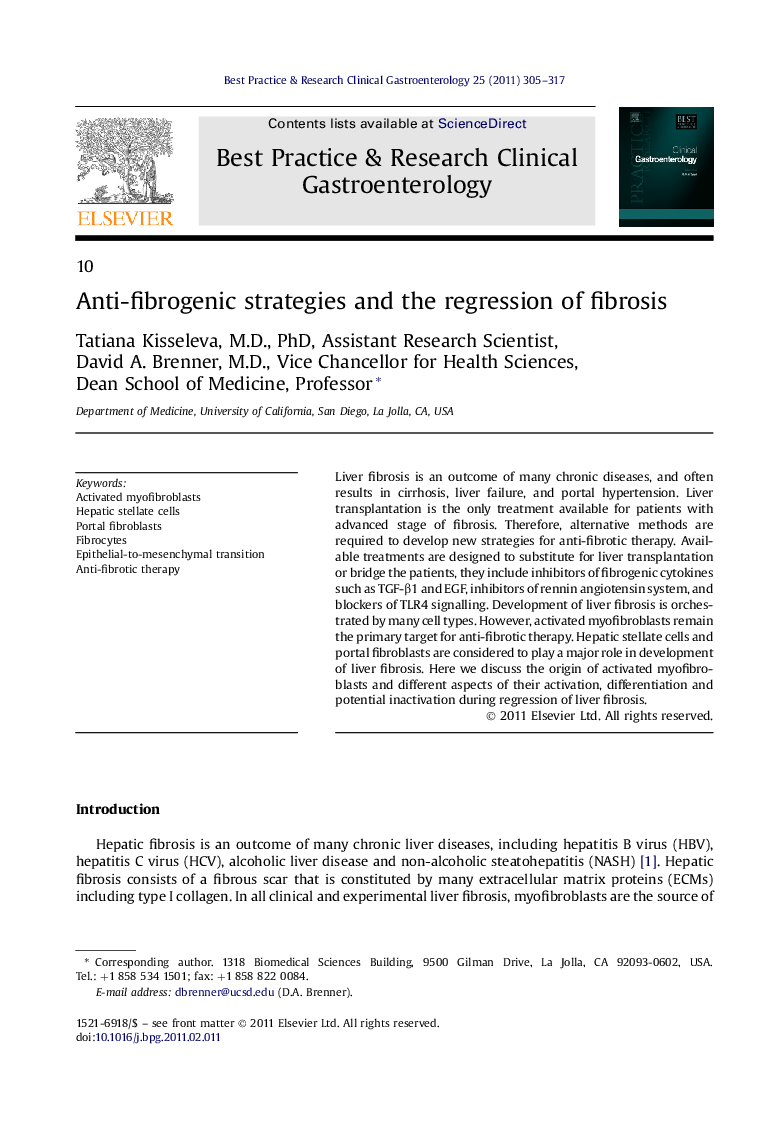| کد مقاله | کد نشریه | سال انتشار | مقاله انگلیسی | نسخه تمام متن |
|---|---|---|---|---|
| 6086534 | 1207227 | 2011 | 13 صفحه PDF | دانلود رایگان |

Liver fibrosis is an outcome of many chronic diseases, and often results in cirrhosis, liver failure, and portal hypertension. Liver transplantation is the only treatment available for patients with advanced stage of fibrosis. Therefore, alternative methods are required to develop new strategies for anti-fibrotic therapy. Available treatments are designed to substitute for liver transplantation or bridge the patients, they include inhibitors of fibrogenic cytokines such as TGF-β1 and EGF, inhibitors of rennin angiotensin system, and blockers of TLR4 signalling. Development of liver fibrosis is orchestrated by many cell types. However, activated myofibroblasts remain the primary target for anti-fibrotic therapy. Hepatic stellate cells and portal fibroblasts are considered to play a major role in development of liver fibrosis. Here we discuss the origin of activated myofibroblasts and different aspects of their activation, differentiation and potential inactivation during regression of liver fibrosis.
Journal: Best Practice & Research Clinical Gastroenterology - Volume 25, Issue 2, April 2011, Pages 305-317